This is the first of a three-part series about the natural early math learning process for my builder son. Part Two shares his Early Math Activities and Part Three shares his formal learning called Is Formal Math Necessary?
My builder son graduated with both a computer science major and mathematics minor degree. He showed from an early age that he would be gifted in the spatial arena. He viewed everything spatially, and math was no exception. In fact, I would have to surmise that those who are builder-types and view things spatially have a natural bent toward learning and loving mathematics. I believe his spatial skill development truly started through his play choices.
I noticed these attributes starting at the young age of 1.5 years old. My builder son took notice of his big brother’s die cast Thomas the Tank Engine train collection. He would meticulously link them together and drive them around a large space in my kitchen. He liked to get right down at the same level of the trains, with his face pressed into the floor, as he drove them around. This showed early skill development of visualization of spatial concepts.
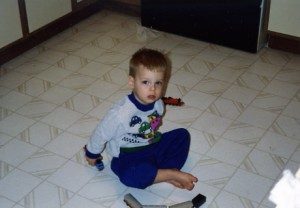
Almost 2 years old.
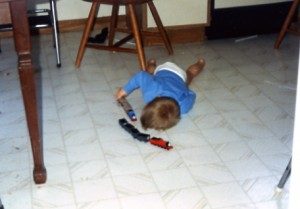
Up close and personal.
When my builder son was almost 3 years old, he received his first Brio wooden train tracks for Christmas. Oh, was he excited! He began constructing train track configurations ever since, including any other style he found or was given. I remember well this little corner in our living room was put to good use as his train corner. Again, the visualization and spatial skills necessary to accomplish this is evident.
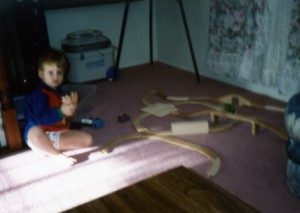
Brio, almost 4.
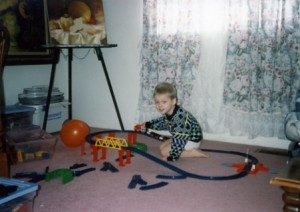
Motorized Tomy train set.
I don’t know when I bought the Lincoln Logs to have in the house. I think I may have done so when my two older children were younger, thinking it to be a classic toy, so I would bring that into the home. I may have also done it on my “all wooden toy” kick. Needless to say, when my builder son discovered them, they were next on his agenda to conquer. One day, I was to get a big surprise when I walked into his room. I found that he had taken the Lincoln Log pieces and laid them out to represent all the single digit numbers. He was about age 4.5 years. I guess that would have been my first indication that he would naturally be drawn to math! He would subsequently build with Lincoln Logs traditionally.
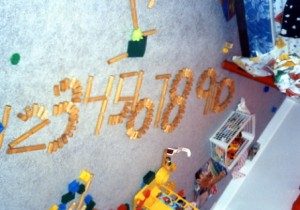
4.5 years old
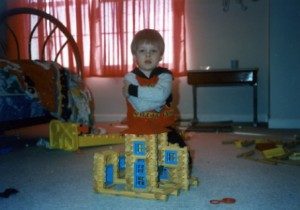
Almost 5 years old.
All types of building material was fair game for my builder son to explore and develop his spatial skills. I found a screw and nail building set in which he was challenged in new ways as well as using to enhance his train track creations.
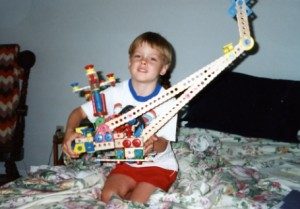
6 years old.
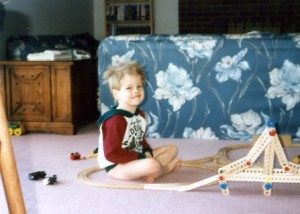
Almost 5 years old.
Naturally, it was only a matter of time before LEGO entered the scene. My builder son started dabbling in it around 4 years old, and went to around 12-13 years old before he traded it in for computer programming. He started making stop-gap action movies with his LEGO with LEGO Studio around 11 years old. Technics and LEGO Mindstorms followed shortly after that. He seemed to always want to build with the actual directions the first time, and then he would often build his own creations.
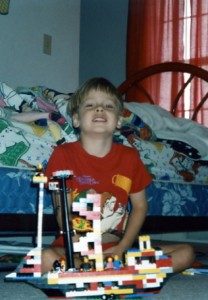
6.5 years old. His own creation.
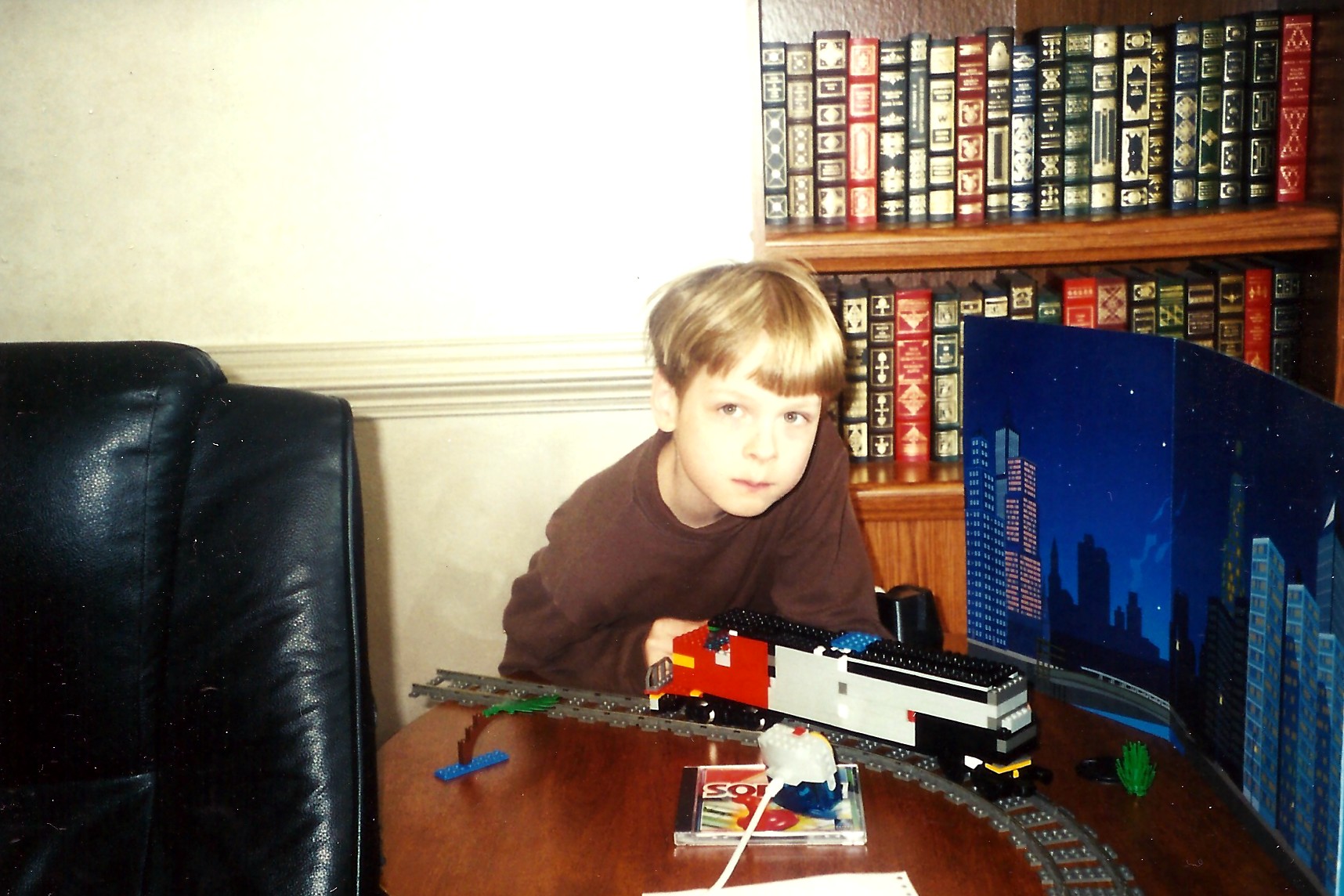
Stop-gap motion LEGO Studio movies. 10 years old.
Creating novel LEGO designs takes great visualization and spatial ability. My builder son made a pyramid after talking about it in our homeschooling. Inside this pyramid was just as intricate with mazes as the outside was able to depict its representation. Further, my builder son was making contraptions before they existed (or at least before we knew they did if they were in existence at the time).
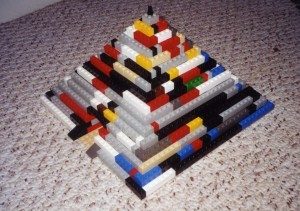
9.5 years old
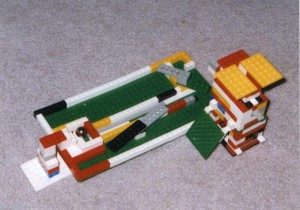
6.5 years old.
To conclude the building aspect to his math progression, there was a season when he would intersperse the diverse types of resources and create cities.
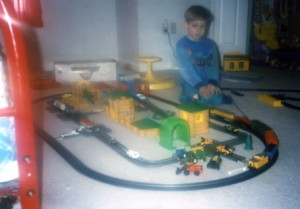
6 years old.
Thus, beginning at 18 months old with building his train cars to the age of about 11 to 12 years old with his LEGO, his “play” truly was the foundation of thinking mathematically for my builder son. This period also extensively developed his visualization and spatial skills that would serve him well both for math and for computer programming. He would spend time during this entire timeframe of at least 6 to 8 hours a day building.
Although I didn’t know at the time I would consider these play activities so important to my builder son’s development of math attributes, I did recognize at the time the higher level skills he needed to play in this manner. I also chose to value his focus on trains and building materials as relevant, whether I fully understood the extent of the value at the time or not. Later, I would research his learning style and discover he is a right-brained learner. These children spend a lot of focused time on creative outlets as the strongest basis of representing their universal gifts of pictorial thinking and creativity, especially starting in the early years. Building is one of those creative outlets, and it’s quite evident in this post that this was a gift and focus for my builder son. Play truly does reveal the strengths and gifts of any child if we learn to value what they show us is important to them.
What play skills do you notice (or in hindsight, did you notice) that your math-loving child is/was attracted to?






Pingback: Honoring Both Math Minds | The Right Side of Normal
Pingback: Is Formal Math Necessary? | The Right Side of Normal
Pingback: There are no Educational Emergencies | The Right Side of Normal